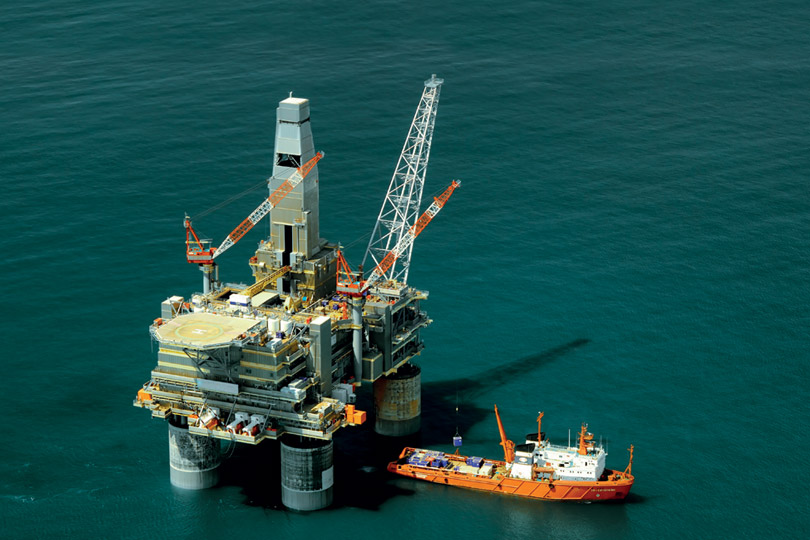
Singapore’s Marine and Offshore Sector the Beneficiary of Past Years of High Oil & Gas Prices
Over the years, Singapore has leveraged on its strengths in shipbuilding and engineering, steadily growing to become a major player in the offshore sector. Today, the Republic is the largest manufacturer of jack-up rigs, and commands 70 per cent of the global market share. Singapore also has 70 per cent of the global market for the conversion of Floating Production Storage Offloading (FPSO) units.It must be said that Singapore has been a beneficiary of high oil and gas prices over the past years, which have driven the growth of the marine and offshore engineering sector. In 2013, the industry achieved a record milestone in rig construction and delivery, with the delivery of 31 newly built rigs. Overall, the industry also performed well, hitting a total turnover above the S$15 billion mark.
Within the sector, two companies stand out: Keppel Offshore & Marine and Sembcorp Marine, which are the world's number 1 and number 2 maker of oil rigs. Singapore is also home to a large number of firms in offshore solutions and services such as offshore & marine engineering and construction, vessel owner-operators, shipyards, offshore machine, systems integrator, turnkey engineering and oilfield equipment and tools.
Current State of Record Low Oil Prices Leaves Oil & Gas Majors Struggling
While the oil and gas sector has always been susceptible to boom and bust cycles, the plummet in oil prices in 2015 has nonetheless caught many off-guard with its swiftness and severity. While there has been much debate on the specific factors behind the decline – from more than US$100 per barrel in late 2014 to its current lows of US$30 per barrel – we can trace it primarily to overcapacity from oil-producing nations, as well as a decrease in energy demand from many major economies around the world.The resultant fallout has severely impacted upstream exploration and production. With oil prices at record lows – and looking set to remain there for some time – most of the oil majors are pulling back on the heavy investment required for such exploration and production activity, preferring to wait it out. In all, the scaling back of exploration and production has resulted in many jobs losses for the sector globally. At the same time, makers of offshore and onshore equipment and platforms, are beginning to see orders dry up – along with cancellations and postponement – putting their bottom lines at risk too.
Having benefited from the upswing in oil prices, Singapore has not been spared from the decline.
Singapore Offshore Firms Coming to Terms with New Normal of Low Oil Prices
Across the board, Singapore’s marine and offshore sector has been badly affected, with record low oil prices depressing the demand for exploration and production activities. For 2015, new orders at Keppel Offshore & Marine and Sembcorp Marine fell to their weakest level in six years. In addition, both companies are facing the possibility of major project cancellations from one its major South American clients, Sete Brasil. The Brazilian firm has been facing a corruption investigation involving its client, state-run oil producer Petrobras. Having failed to secure long-term financing, Sete Brasil is now facing the possibility of bankruptcy.As Sete Brasil is one of the largest clients for jack-up rigs at both Keppel Offshore & Marine and Sembcorp Marine – about 40 per cent of both companies’ backlog, according to analysts – the potential fallout is expected to be significant. Across the rest of the industry, investment analysts are also concerned with heightened default or cancellation risks from smaller clients, should oil prices continue to stay depressed.
Singapore’s Lesser Exposure to Onshore Sector Means Lower Fallout
There are significant differences between drilling for oil and gas offshore and onshore. Fundamentally, offshore oil drillers require more long term investments in floating platforms and rigs. This has translated to opportunities for Singapore’s marine and offshore engineering sector, with multi-year contracts to build these deepwater exploration and production platforms. Meanwhile, onshore oil drillers can turn on or off their drilling depending on the price of oil and gas.Building on its base as a leading oil refinery centre, Singapore has grown to become the regional headquarter of choice for many oil and gas firms. With many decisions affecting regional explorations and production made here, this has attracted oilfield services firms such as Schlumberger, Halliburton, Baker Hughes and Weatherford. Considering everything, Singapore’s exposure to the onshore sector is relatively small.